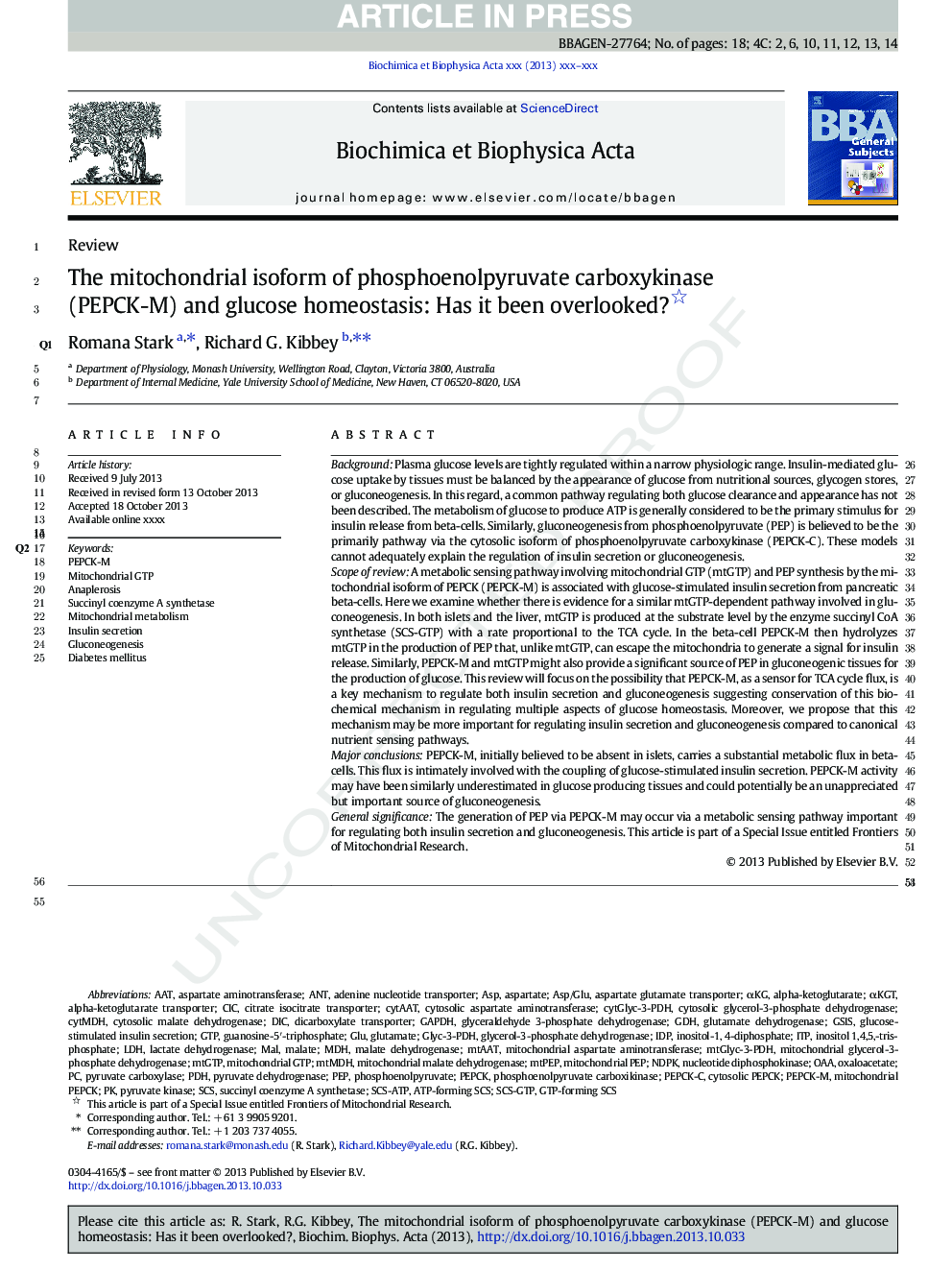| کد مقاله | کد نشریه | سال انتشار | مقاله انگلیسی | نسخه تمام متن |
|---|---|---|---|---|
| 10800197 | 1054621 | 2014 | 18 صفحه PDF | دانلود رایگان |
عنوان انگلیسی مقاله ISI
The mitochondrial isoform of phosphoenolpyruvate carboxykinase (PEPCK-M) and glucose homeostasis: Has it been overlooked?
دانلود مقاله + سفارش ترجمه
دانلود مقاله ISI انگلیسی
رایگان برای ایرانیان
کلمات کلیدی
GTPPEPCK-MCytosolic malate dehydrogenasePEPCK-COxaloacetateαKGOAAGSISNDPKAnaplerosisPDHIDPPEPCKAATMDHPEPCICDICASPGAPDHMALANTSCsGDHguanosine-5′-triphosphate - guanosine-5'-triphosphateaspartate - آسپارتاتcytosolic aspartate aminotransferase - آسپارتات آمینوترانسفراز سیتوزولmitochondrial aspartate aminotransferase - آسپارتات آمینوترانسفراز میتوکندریAspartate aminotransferase - آسپارتات ترانس آمیناز یا AST alpha-ketoglutarate - آلفا کتوگلووتراتInsulin secretion - ترشح انسولینGlucose-stimulated insulin secretion - ترشح انسولین تحریک شده توسط گلوکزadenine nucleotide transporter - حمل کننده نوکلئوتیدی آدنphosphoenolpyruvate - فسفوآنولپیرواتphosphoenolpyruvate carboxykinase - فسفوآنولپیرود کربوکسیکینازlactate dehydrogenase - لاکتات دهیدروژناز LDH - لاکتات دهیدروژناز به صورت مختصر شده LDH malate - مالتmalate dehydrogenase - ملات دهیدروژنازMitochondrial malate dehydrogenase - میاتوکندریال ملاته دهیدروژنازITP - و غیره.pyruvate dehydrogenase - پیرووات دهیدروژنازpyruvate carboxylase - پیرووات کربوکسیلازpyruvate kinase - پیرووات کینازGlu - گلوglutamate - گلوتاماتglutamate dehydrogenase - گلوتامات دهیدروژنازGluconeogenesis - گلوکونوژنزglycerol-3-phosphate dehydrogenase - گلیسرول 3-فسفات دهیدروژنازmitochondrial glycerol-3-phosphate dehydrogenase - گلیسرول 3-فسفات دهیدروژناز میتوکندریglyceraldehyde 3-phosphate dehydrogenase - گلیسرولیدید 3-فسفات دهیدروژناز
موضوعات مرتبط
علوم زیستی و بیوفناوری
بیوشیمی، ژنتیک و زیست شناسی مولکولی
زیست شیمی
پیش نمایش صفحه اول مقاله

چکیده انگلیسی
The mitochondrial isoform of phosphoenolpyruvate carboxylase (PEPCK-M) plays an important role in glucose homeostasis. As PEPCK-M is constitutively expressed and dependent upon mitochondrial GTP (mtGTP), it is well disposed to link the mitochondrial energy sensing signal “mtGTP” with insulin secretion in the pancreas (left) or glucose production (right) in the liver. Glucose that enters the β-cells of the pancreas (left) is degraded to phosphoenolpyruvate (PEP) during glycolysis and metabolized to pyruvate. Pyruvate that enters the TCA cycle by pyruvate dehydrogenase (PDH) will generate GTP via direct synthesis by SCS-GTP. Anaplerotic pyruvate entry by pyruvate carboxylase (PC) will generate oxaloacetate. PEPCK-M will then consume oxaloacetate and GTP to produce PEP. In contrast to the pancreas, the liver has two PEPCK isoforms: cytosolic (PEPCK-C) and mitochondrial (PEPCK-M) and both produce PEP when there is adequate TCA flux (right). PEP can then be used for gluconeogenesis. The mtGTP/PEPCK-M pathway is a hormone-independent gluconeogenic pathway. GDH glutamate dehydrogenase.182
ناشر
Database: Elsevier - ScienceDirect (ساینس دایرکت)
Journal: Biochimica et Biophysica Acta (BBA) - General Subjects - Volume 1840, Issue 4, April 2014, Pages 1313-1330
Journal: Biochimica et Biophysica Acta (BBA) - General Subjects - Volume 1840, Issue 4, April 2014, Pages 1313-1330
نویسندگان
Romana Stark, Richard G. Kibbey,